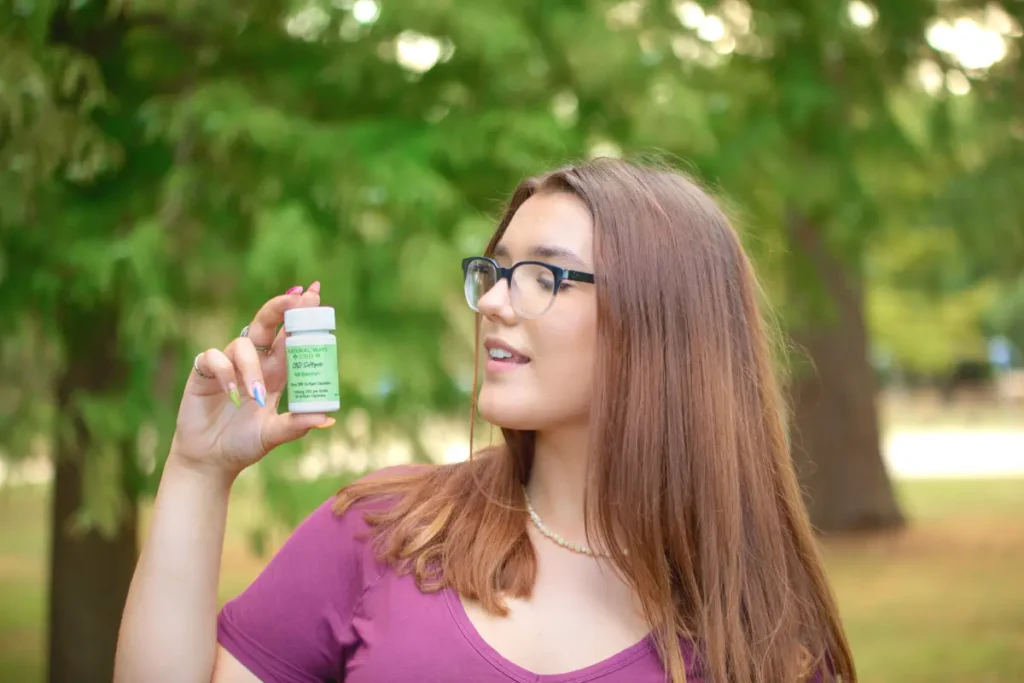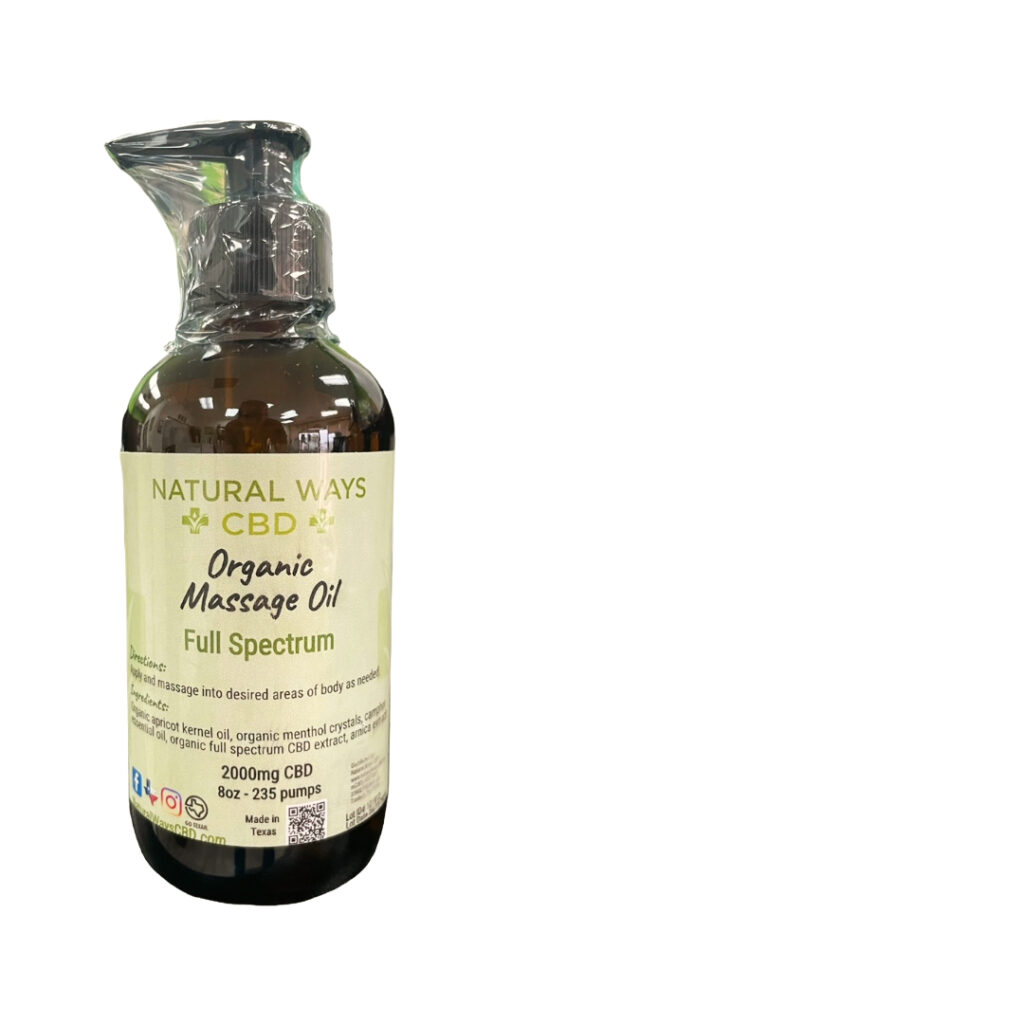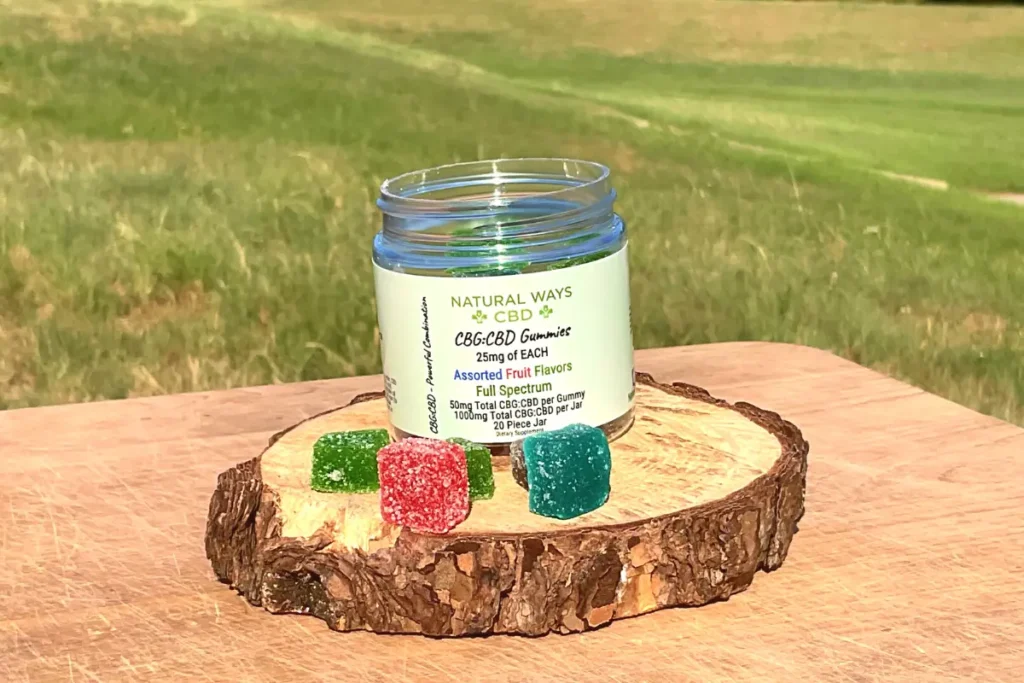Cannabidiol (CBD) is a popular natural supplement for anxiety, pain, and sleep. Research suggests CBD may support the body and mind, thereby having the potential to help in these areas.
But CBD has many other uses. Among them is the use of CBD as an antiemetic, or a substance that reduces nausea and vomiting.
CBD has been researched for its potential anti-emetic properties – both for acute nausea, as well as for long-term nausea caused by cancer treatment. While the studies so far don’t conclusively prove CBD to be a reliable nausea treatment, it likely has some benefits.
And that’s what this article is dedicated to. We’re going to explore the research on CBD for nausea and discuss how it works in the body. We’ll also discuss how best to use CBD for nausea, from what product to use to how much you should take.

What is CBD?
Cannabidiol (CBD) is a naturally occurring cannabinoid in hemp. It’s become a popular natural supplement because it has a variety of potential benefits and won’t get you high.
For this, CBD has been dubbed “The Swiss Army Knife of Cannabinoids.”
CBD is most commonly used for anxiety, stress, sleep, pain, and inflammation, but it’s also shown therapeutic potential for epilepsy, nausea, addiction, and more.
Can CBD Help With Nausea?
Several studies indicate CBD may have antiemetic properties, or the ability to reduce nausea and vomiting.
Research suggests CBD may help with nausea by interacting with the serotonin receptors in your body. Serotonin is a hormone associated with feelings of well-being – it plays a role in determining how much anxiety, pain, and nausea you feel, among other things.
By supporting serotonin transmission, CBD may be beneficial for people with nausea.
While CBD has potential, research shows delta-9-tetrahydrocannabinol (delta 9 THC) may be even better for nausea. However, THC creates a head high, so CBD offers an alternative for people in search of a milder option.
Currently, two cannabis-based drugs have been approved by the Food and Drug Administration (FDA) as treatments for chemotherapy-induced nausea and vomiting: Nabilione and Dronabinol. Both are THC-based.
Nausea from Chemotherapy
Several pieces of research suggest CBD has therapeutic potential to support the body against chemotherapy-induced nausea and vomiting.
One study on humans found that a combination of CBD and THC may provide nausea relief for people who are being treated with chemotherapy.
Another study looked at the use of a CBD-THC combination for chemotherapy-induced nausea.
The researchers found that taking a 1:1 blend of CBD and THC in addition to antiemetic medications resulted in improvements beyond what the medications gave by themselves.
However, the study also found that 31% of patients reported moderate or severe side effects, such as sedation, dizziness, or disorientation. Despite this, 83% of participants preferred cannabis to the placebo.
Additionally, the American Cancer Society recognizes cannabinoids as a treatment option for chemotherapy-induced nausea if other treatments don’t work.
More research is needed on CBD for chemotherapy-induced nausea and vomiting, and it’s not yet considered a treatment by the FDA. Nonetheless, CBD may help by comprehensively supporting physical and mental health.
Nausea from Pregnancy
There are two main types of pregnancy-induced nausea: morning sickness and hyperemesis gravidarum (HG). HG is more severe than morning sickness.
Some women use cannabinoids, such as CBD, for morning sickness and HG. However, the research behind this practice is mixed.
One study found that cannabis, of which CBD is a major component, may help with HG, and that it was “associated with a significant increase” on a quality of life scale.
However, CBD may not be safe to use during pregnancy. One study on mice found that CBD may disrupt neurodevelopment and stunt problem-solving abilities in offspring.
As of right now, much more research on CBD for morning sickness and HG is needed before we know its true benefits and detriments. We do not recommend using CBD for pregnancy-induced nausea unless you see your doctor first and they determine it’s safe for you.

What’s the Best Type of CBD for Nausea?
There are three main types of CBD:
- Full-spectrum CBD is a type of CBD that contains additional cannabinoids and terpenes that naturally occur in hemp. Cannabinoids in full-spectrum extracts include CBG, CBN, and THC.
- Broad-spectrum CBD is the same as full-spectrum CBD, except it does not include THC.
- CBD isolate is just CBD, with no other cannabinoids or terpenes.
Generally, full-spectrum CBD is the most beneficial type of CBD for nausea and vomiting because it contains THC, which is the most therapeutically effective cannabinoid for nausea.
Full-spectrum CBD extract delivers the entourage effect – the heightened benefits you get from using cannabinoids and terpenes together, as they naturally occur. However, full-spectrum CBD won’t get you high.
How Does CBD Work for Nausea?
CBD primarily works for nausea through your body’s endocannabinoid system (ECS), a receptor system responsible for keeping your body in homeostasis, or balance.
Your ECS regulates all of your vital functions. Major functions include the pain and inflammatory response, mood, and sleep-wake cycle, but research also shows that the ECS regulates nausea and vomiting.
The ECS works to maintain homeostasis, or balance, in your body – normal states of physical and mental health.
CBD may support the function of your ECS by preventing endocannabinoid breakdown. A healthier ECS is then better able to regulate your body, including the feeling of nausea and the tendency to vomit.
Another way CBD works for nausea is by affecting the transmission of neurotransmitters in your brain, including serotonin. Research shows CBD may improve serotonin transmission, leading to feelings of greater physical and mental well-being.
CBD for Nausea: Side Effects & Safety Considerations
While CBD has a vast array of therapeutic benefits, it may also cause some adverse side effects:
- Dry mouth
- Diarrhea
- Reduced appetite
- Drowsiness
- Fatigue
To avoid these side effects, start with small doses of CBD and gradually work your way up.
As an additional consideration, be sure to speak with your doctor before using CBD if you’re on any medications, whether prescription or over-the-counter. CBD may interact negatively with some medications, creating adverse effects.
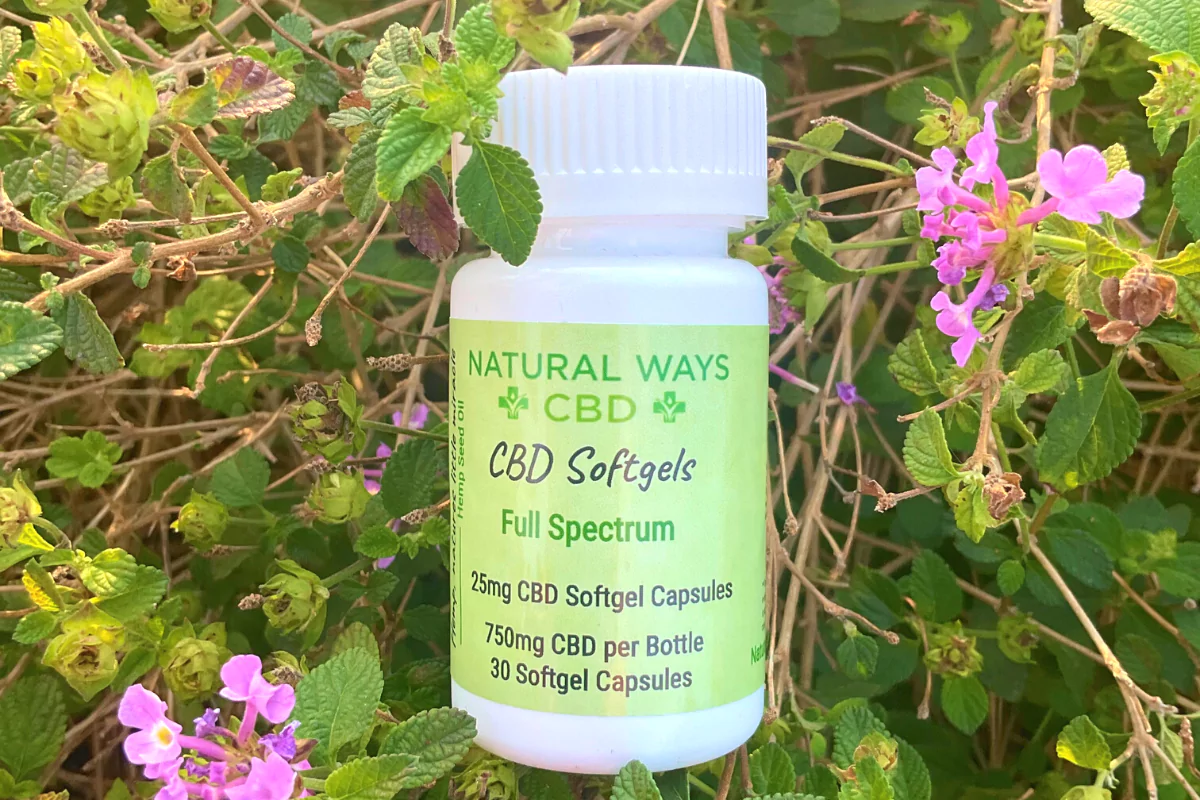
How to Use CBD for Nausea: Types of Products
There are several different ways to take CBD, and each method has its upsides and downsides if you’re using CBD for nausea and vomiting.
Generally, the best CBD product for nausea is the one that acts most quickly. Here’s a bit about each type of CBD product along with relevant considerations.
For reference, bioavailability is a measure of the percentage of CBD you consume via a given method that your body uses – your body naturally discards some portion of all substances you consume.
Oil
Average Bioavailability: 20-30%
Onset Time: 15-20 minutes
CBD oil consists of hemp extract (the CBD) and carrier oil. It’s a sublingual product, meaning you take it by placing it under your tongue and allowing the blood vessels in your mouth to absorb the CBD into your bloodstream.
CBD oil is a great choice for nausea for two reasons: it’s fast-acting (it has a 10-15 minute onset) and it’s easy on the stomach (and most of it won’t be swallowed, but absorbed).
Gummies
Average Bioavailability: 10-20%
Onset Time: 45 minutes to 1 hour
CBD gummies provide a fixed-dose CBD consumption method. Since each piece contains the same amount of CBD, you won’t have to measure your dose.
Because they are a type of candy, CBD gummies are a good option for nausea because the body generally craves sugar and carbs during times of sickness.
However, the drawback of edibles is that they take 45 minutes to 1 hour to begin working – if you’re nauseous, you probably don’t want to wait that long.
Softgels/Capsules
Average Bioavailability: 10-20%
Onset Time: 45 minutes to 1 hour
Softgels and capsules offer an alternative to gummies. They are taken the same way you take any other capsule (e.g. Advil). Like gummies, capsules are a fixed-dose consumption method.
Flower & Vapes
Average Bioavailability: 30-40%
Onset Time: 5-10 minutes
Inhalable CBD consumption, such as hemp flower or CBD vapes, provides another alternative.
Inhaling anything poses a health risk. However, flower and vapes have a distinct advantage for nausea: they deliver CBD straight to the lungs, so you’ll begin feeling the effects in just 5-10 minutes.
CBD vs. THC for Nausea
Delta 9 THC, or simply THC, is more effective than CBD at addressing nausea. For this reason alone, it may be preferable if your goal is to find the strongest cannabinoid.
However, THC poses some risks that CBD doesn’t – namely, its side effects. THC will get you high, and it may also create effects like cognitive impairment, dizziness, anxiety, and paranoia, especially if you take too much.
CBD will not get you high at all. While it has side effects, they are generally less severe than those of THC.
Ultimately, THC is stronger, but you might also have to endure more downsides to feel its benefits.
CBD vs. CBG for Nausea
Cannabigerol (CBG) is another naturally-occurring cannabinoid in the hemp plant. It has some of the same benefits as CBD, and many people use CBG for nausea.
Like CBD, CBG will not get you high. It will render stronger mental effects, however. While CBD is mildly mentally relaxing, CBG is uplifting and creates feelings of energy and clarity.
We don’t have enough research to determine which of these cannabinoids is more potent for nausea. Instead, we recommend choosing between them based on the mental effects you want.
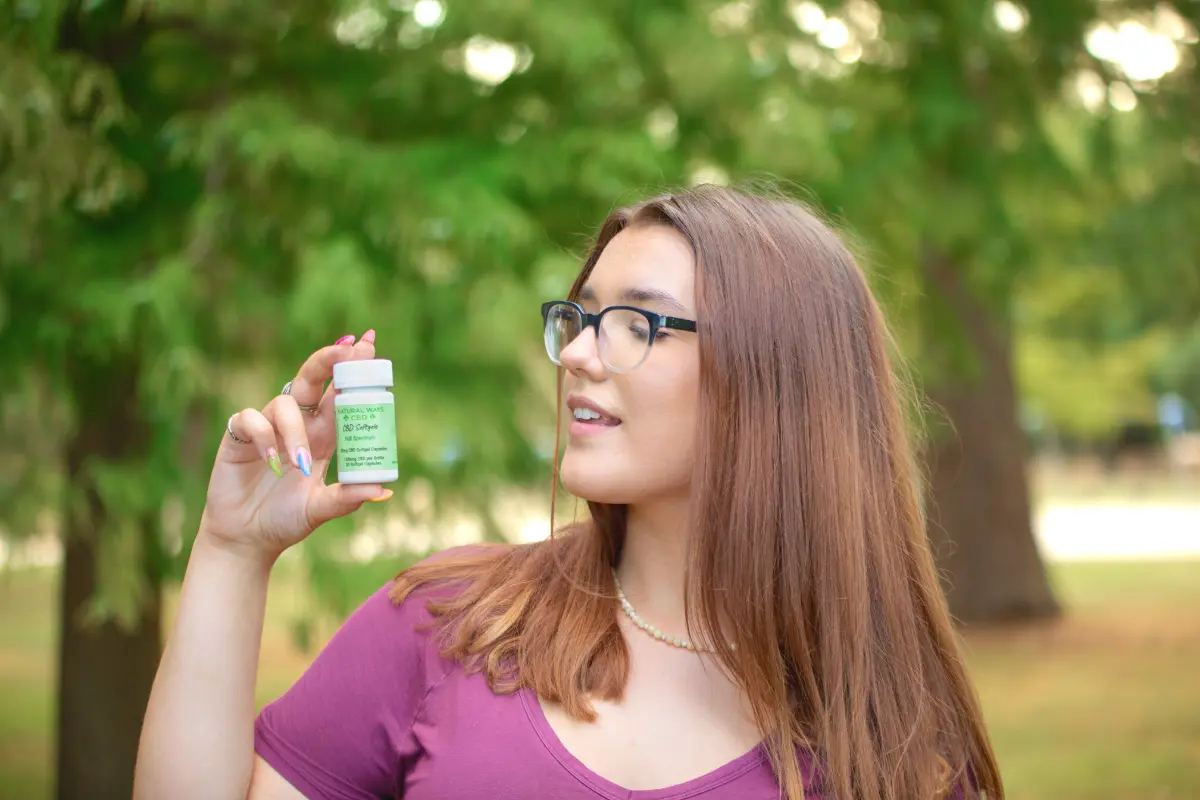
CBD Dosage for Nausea
When it comes to CBD dosage for nausea, you’ll want to start small. Often, small doses of CBD are all you need to see improvements.
Even if you discover you need more, starting small will help you avoid side effects as you increase your dose.
You can use the following formula to calculate your starting dose:
(0.1) x (your body weight in lbs.) = your daily dose of CBD for nausea in mg.
Based on this formula, most people should start by taking 10-25mg of CBD daily for nausea.
Once you’ve used this dose a few times, you can adjust it until you settle on the right amount.
If you’re using CBD for acute nausea – so repeated dosing is unnecessary – simply wait until your product begins working (gummies work in 45 minutes to 1 hour, oil in 10-15 minutes, etc.) before taking more.
How to Choose CBD Products for Nausea
If you’re going to use CBD for nausea, it’s important to buy a high-quality product to see good results.
Here are a few tactics to employ as you shop for CBD:
Check Lab Reports
Only buy CBD products that have a certificate of analysis (COA) from a 3rd-party lab.
Reputable companies have their products tested to verify potency, safety, and authenticity; look for the following when examining a lab report:
- Cannabinoid profile: Ensure that the cannabinoids stated in the lab report are the cannabinoids the product is supposed to contain, according to its label.
- Potency: Check the amount of each cannabinoid listed in the lab report to ensure it matches what’s listed on the product’s label.
- Contaminants: Make sure the product passes the tests for heavy metals, pesticides, and mold.
Read Ingredients
Make sure the ingredients list for the product you’re interested in specifically says cannabidiol.
If a product says hempseed oil or cannabis sativa oil, it doesn’t necessarily contain CBD.
Make Sure it’s Responsibly Sourced
Buy products that are made by reputable companies from organic hemp grown in the US.
Because US hemp is subject to regulation, it won’t contain more than 0.3% THC by law, so you can assume with high confidence that you’re getting a safe, legal product.
Other Natural Remedies for Nausea
CBD is great, but it isn’t your only option for addressing nausea naturally. Here are some other things to try:
- Ginger – Ginger may reduce feelings of nausea. Research shows that consuming 1,500 milligrams of ginger daily may be beneficial for nausea.
- Peppermint – Several studies have shown that inhaling peppermint oil may reduce nausea. Peppermint tea may have similar effects.
- Lemon – Smelling lemon and other citrus smells may help with nausea, especially pregnancy-related nausea.
- Use certain spices – Cinnamon, cumin extract, and fennel powder may reduce nausea.
- Drink plenty of water – Dehydration may worsen nausea, in addition to generally depleting your body. If you’re nauseous, be sure to stay hydrated. If you’re vomiting, you might consider drinking electrolyte-rich fluids, such as sports drinks or vegetable broth, to replenish your body.
When to Talk to a Doctor
Nausea may be a temporary side effect of a cold or non-severe food poisoning. Often, it will subside as the sickness subsides and requires no medical attention.
However, if vomiting lasts for more than two days, you should see a doctor.
We always recommend seeing your doctor before using CBD. They will be able to determine if it’s a safe remedy for your situation – especially if you use prescription and/or over-the-counter medications.
Conclusion: Can CBD Help with Nausea?
Many of the studies on CBD for nausea also include THC, so there is a lot left to learn about how effective CBD is for nausea.
However, research so far indicates it may have some benefits. Other cannabinoids, like THC and CBG, have also been found to be beneficial; it’s likely that CBD shares some of these benefits, too.
CBD is particularly promising for long-term nausea. It may support physical and internal health without creating adverse effects as strong as those of THC, making it a more sustainable option.
Just remember that CBD is never an alternative to medical attention – it is simply a supplement to more proven methods.
CBD for Nausea: Frequently Asked Questions
Here are some questions customers frequently ask us about using CBD for nausea.
Is CBD good for nausea?
Many people benefit from using CBD for nausea, however, more clinical research is needed before we know if it’s a reliable treatment.
How do cannabinoids work to relieve nausea?
CBD and other cannabinoids may help with nausea by promoting serotonin transmission, which improves your overall well-being, as well as by supporting the function of your body’s endocannabinoid system (ECS).
How fast does CBD oil work for nausea?
CBD oil generally begins working within 10-15 minutes of use.
Can CBD help with morning sickness?
CBD may promote physical and internal support, and many people use it for nausea. However, we do not recommend using CBD while pregnant before speaking with your doctor.
Can CBD make you nauseous?
Nausea is a possible side effect of using CBD.
How do you stop nausea fast?
Quick ways to reduce nausea include getting fresh air, distracting yourself by watching a movie or listening to music, and drinking peppermint tea.

